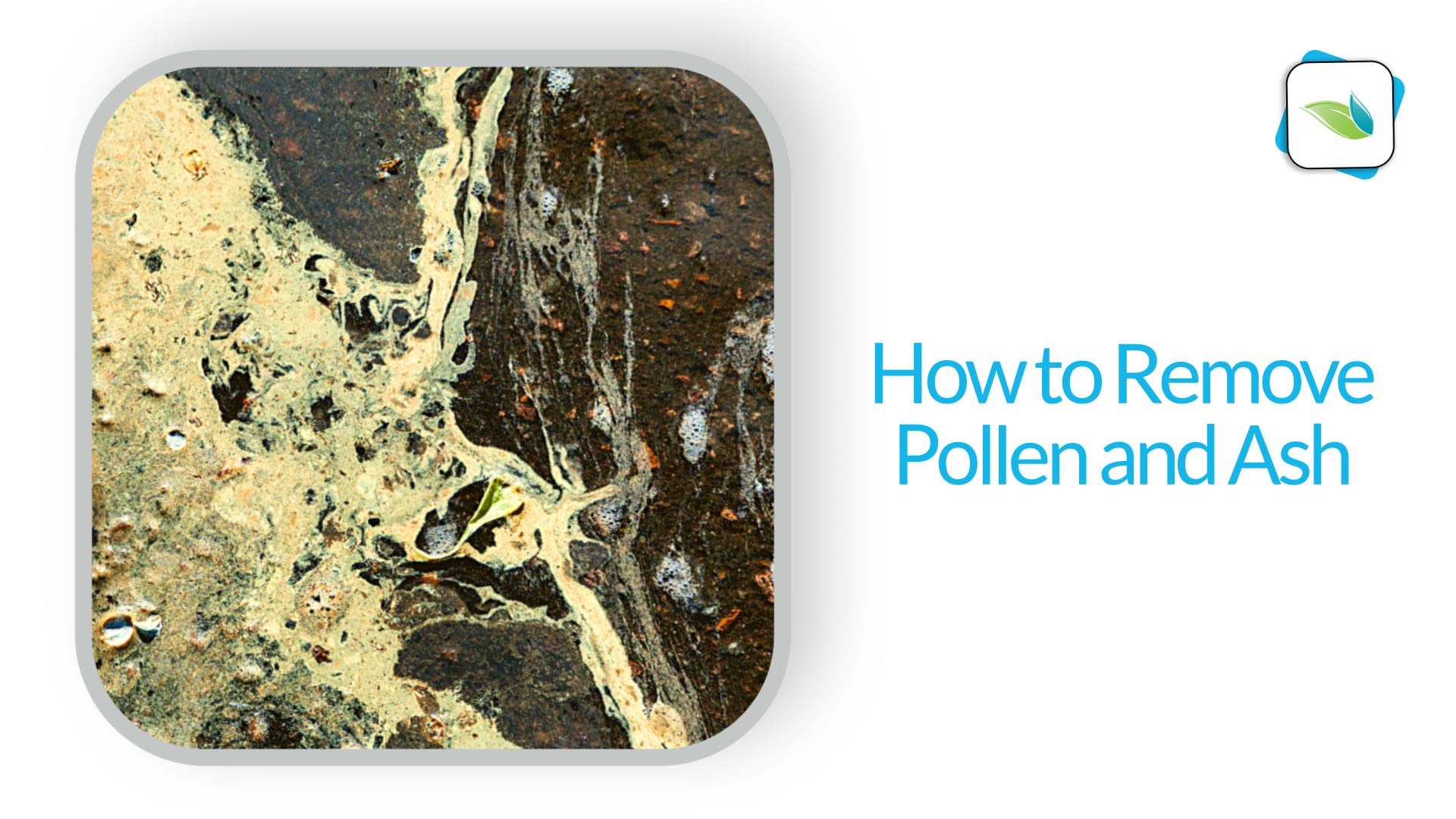How to Get Rid of Pollen in your Pool (and other Small Debris)

Pollen, Ash, and other Small Debris Removal
Based on 10,000 gallons (37,855 L)
Overview
Pollen floats on the surface of the water during springtime, and it is NOT something that can be easily oxidized or removed. It is also notoriously difficult to filter out in skimmer pools because pollen floats on the surface and may not get pulled down into skimmers. This procedure outlines how to address pollen (and other small debris, like ash) the Orenda way.
Remember that water quality depends on three things: circulation, filtration, and chemistry. This procedure presumes your pool has decent circulation and filtration, otherwise this process may not be as effective as it should be.
Related: How to Implement the Orenda Program
You may need:
- A sprayer bottle
- A measuring cup
- A net and pole
- CE-Clarifier
- CV-600 or CV-700
- PR-10,000
Pollen
Pollen is an organic material that is not easy for a disinfectant to address. And because it floats at the pool's surface, it often does not get filtered out, but instead sticks to tile lines and inside skimmers. The key to removing pollen is getting it physically out, or changing the surface tension of the water to get it pulled into the filter. CE-Clarifier is the top choice for this, assuming your pool has been purged with CV-600 or CV-700 enzymes already. The enzyme residual is key to addressing pollen, while CE-Clarifier grabs it and helps it get filtered out.
First visit
- Brush pollen off the tile line into the pool.
- Spray/broadcast the initial dose of CE-Clarifier (4 fl.oz./10,000 gallons) across the surface of the pool.
- CE-Clarifier should push debris toward the perimeter of the pool.
- Ideally, the pool has already been purged with CV-600 or CV-700 enzymes this season. If not, we strongly recommend beginning with an enzyme purge to create a residual that can better handle pollen. This process is much easier with enzymes already in your water.
- Use a net to remove as much physical debris as you can.
- Pollen, ash, and other small debris are small enough to go through a normal net. Consider using a net with a finer screening ability to capture pollen and remove it from the pool.
- Clean out the skimmer baskets.
Next visit
- On your next visit, if necessary, add the weekly dose of CE-Clarifier (1 fl.oz./10,000 gallons) or the weekly dose of CV-600/700 enzymes (2-5 fl.oz./10,000 gallons), then repeat step 2 above. Vacuum the floor, as some particles may drop to the floor and need to be vacuumed.
- Check filter pressure. Backwash and/or clean filter if needed.
Notes:
The CE-Clarifier is designed to attract particles (like pollen) to it, and create larger, heavier groups of particles for easier filtration. The enzymes in CE-Clarifier will help reduce surface tension for more rapid clearing of small debris. With enough time, the pollen should be able to be filtered out.
Ash
If you have wildfires in your region, the soot and smoke in the air can leave ash in your pool. As a rule of thumb, if you can smell smoke or see a haze in the sky, it's getting into your swimming pool too. Ash and soot are primarily carbon, but also contain nitrogen and phosphorus, with several other elements too. As a result, wildfires near swimming pools lead to an abundance of algae's favorite nutrients (eutrophication) in swimming pools. It's best to address ash directly, rather than hoping chlorine can handle it–because it cannot.
- Use a net to remove as much physical debris as you can. Pollen, ash, and other small debris are likely to go through the net and not be captured, and that is to be expected. Just remove what you can.
- Clean out the skimmer baskets.
- Once physical debris is out of the pool, purge with CV-600 or CV-700 (32 fl.oz./10,000 gallons) and PR-10,000 (8-16 oz./10,000 gallons), if your pool has not already been purged and maintained with enzymes this season.
- If your pool has been maintained using enzymes already this season, your pool should be prepared to handle ash. Just increase the weekly maintenance dose as needed during wildfire season.
- Spray/broadcast CE-Clarifier (1 fl.oz./10,000 gallons) across the surface of the pool to accelerate particle filtration.
Other Small Debris
Just like pollen and ash, other small debris is also difficult for chlorine to manage. Pollen, ash, and other small debris can float on the surface of the water and tend to mix with non-living organics and oils that float to the surface too. This leads to dirty scum lines on the tile and an ugly appearance to the water. Most dirt and debris will eventually sink. But again, if the pool is loaded with organics, the rising oils can stick to the falling debris, and hold it in suspension. This leads to cloudy water.
A prime example of oils and debris staying suspended is when using PR-10,000 without enzymes in the water. It takes much longer for the cloudiness to clear.
When in doubt, start with enzymes and CE-Clarifier to get the particles to the filter faster.
More Questions?
866-763-4269
